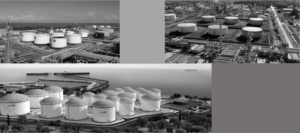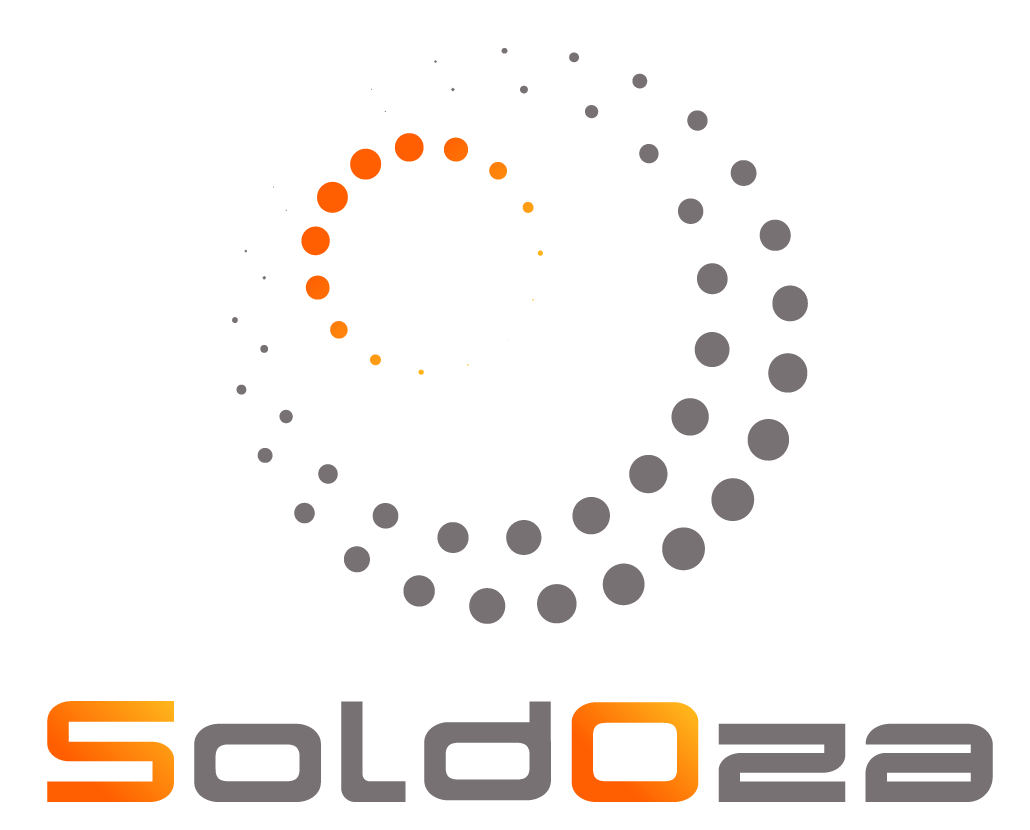Full Matrix Capture (FMC) & Total Focusing Method (TFM): Two Inseparable Brothers! The Phased Array Evolution? (Part. 1)
By: Eng. Jesus Eduardo Contreras
If you belong to the world of Non-Destructive Testing and more specifically, in those techniques related to Ultrasound, most likely, you have recently heard about these 2 inseparable brothers! FULL MATRIX CAPTURE (FMC) and the TOTAL FOCUSING METHOD, let see: What are both techniques and Why are inseparables? In this article let’s talk about FULL MATRIX CAPTURE (FMC)
FULL MATRIX CAPTURE (FMC): is another way of collecting PHASED ARRAY data, the technique does not require any knowledge of the piece to be inspected (nor shape, nor velocities). Each element is just activated (shot) one by one and all the elements in reception are recorded and thus a Matrix of Signal is stored to be processed.
In the figure below (Figure 1), there is a transducer with 8-elements. Each element is capable to emitted and receive signals. The piece has to indications (2 orange hot spot). Immediately, first element (red square) emits a wave front generating an echo response capture by all the elements activating as receiver elements (See the figure 2). The different signals are stored as A-scan in the MATRIX (first column, as shown in the 4th image at the end of 1st row). The process is repeated by the second element as emits and the rest of element as receivers (Figure 3).

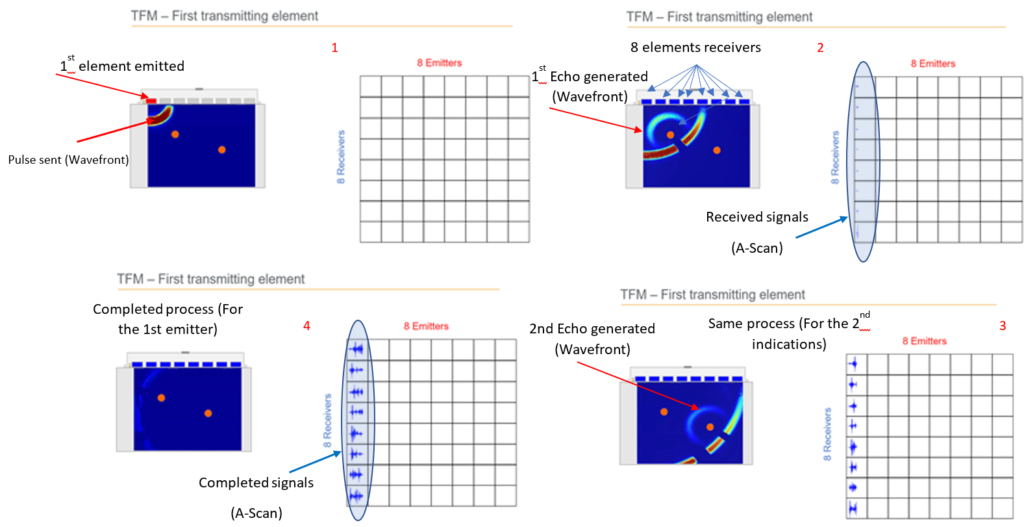
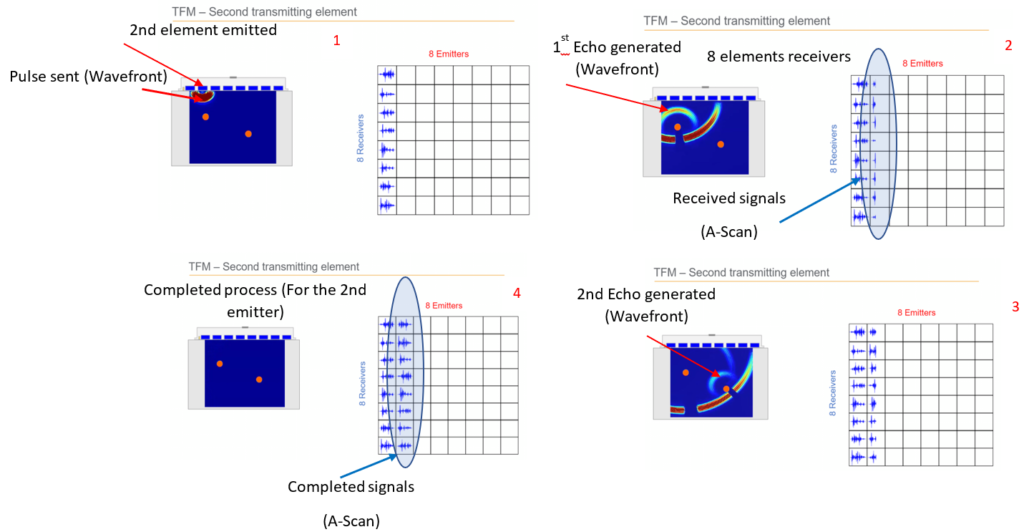
The process is completed when the last element (the 8th element) finished its emission and the echoes generated by the 2 indications are recollected by the 8 elements working as receivers, as is shown in the figure 4.
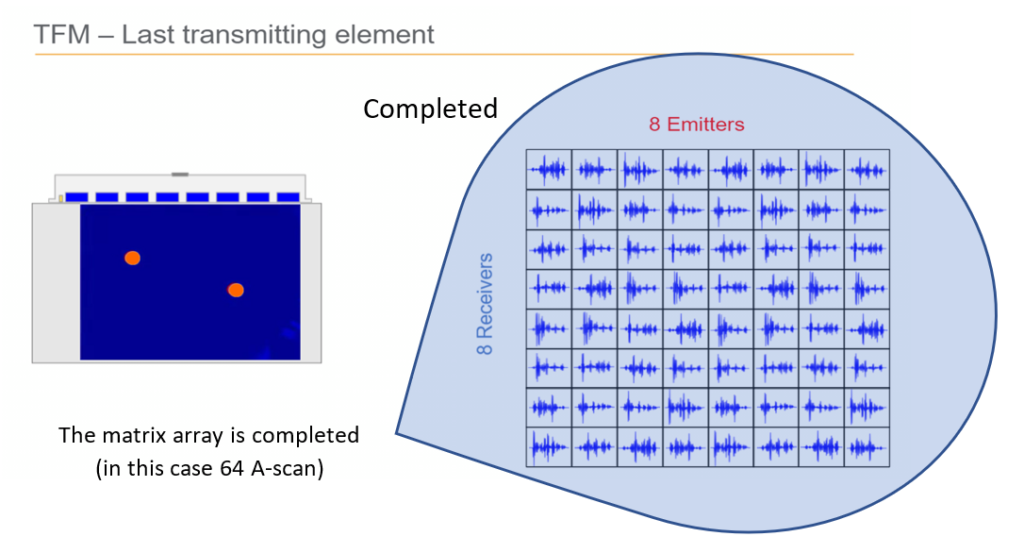
The size of the matrix depends on the element numbers inside of PA transducer. An example of that, is shown in the figure 5
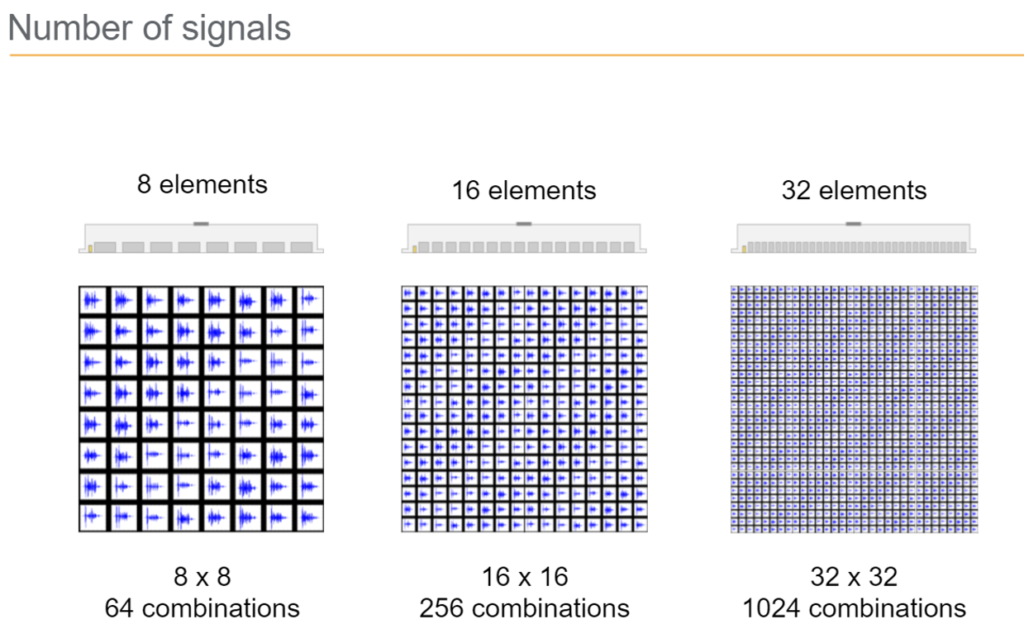
For N elements the matrix array is as follow (Figure 6):
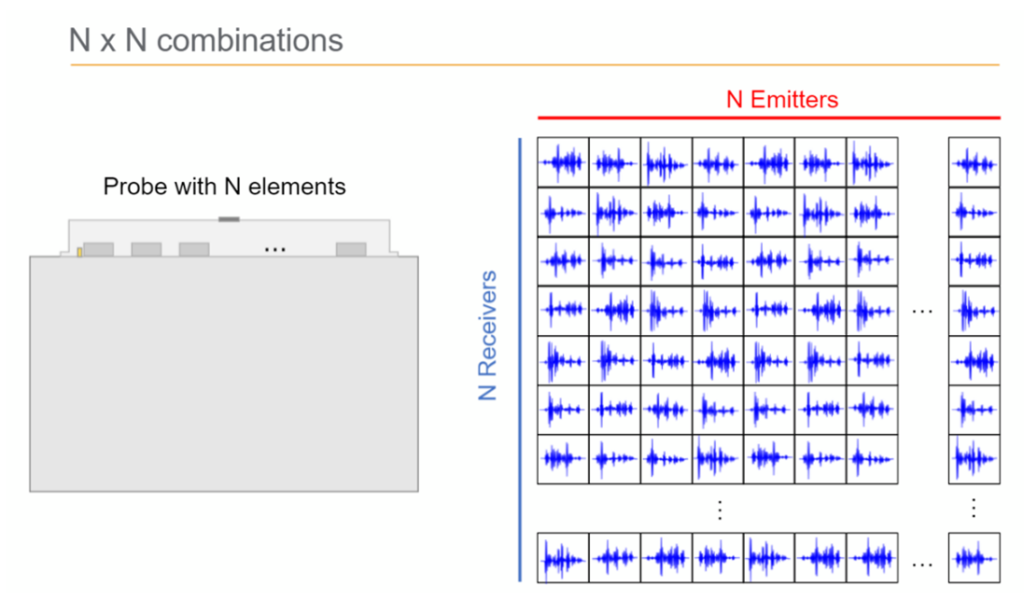
Full Matrix Capture (FMC) is a data acquisition strategy that takes advantage of Phased Array Ultrasonic Testing (PAUT) by collecting all possible transmit-receive combinations in a transducer. This large volume of data is then processed by the increasingly popular TFM technique.
This tool (FMC) is integrated into the latest generation of PA equipment. Now let us see how the FMC working together the Total Focusing Method to develop images significantly better than those generated in Phase Array (PA).
Do not miss the next article about Total Focusing Method (TFM)! If you want to learn more about these and other techniques, please contact us!



